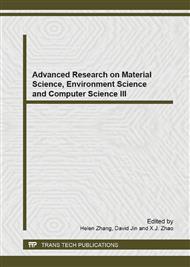p.285
p.289
p.294
p.299
p.304
p.309
p.314
p.319
p.323
Different Rootstocks and Physiological and Biochemical Change of SUM Cherry in Greenhouse Environment
Abstract:
To understand the effects of different rootstocks on the growth of sweet cherry in greenhouse environment, The change of physiological and biochemical indexes of SUM variety grafted on dwarf stock (gisela 5) and the vigorous stock (mahaleb) was studied with biennial seedlings cultivated in greenhouse of north China. The results showed that dwarf stocks could increase content of Malonaldehyde (MDA), proline (PRO), activity of Superoxide dismutase (SOD) and decreased the membrane relative permeability in the leaves of SUM compared with vigorous rootstocks. So the dwarf stocks could increase the resistance of plants. The vigorous stock could decrease content of MDA, but the activity of Peroxidase (POD) was same in the leaves of SUM grafted on both of rootstocks. So, the dwarf rootstock should be better than vigorous stock on increasing resistance or drought and salt tolerance of the cherry varieties SUM.
Info:
Periodical:
Pages:
304-308
Citation:
Online since:
January 2014
Authors:
Keywords:
Price:
Сopyright:
© 2014 Trans Tech Publications Ltd. All Rights Reserved
Share:
Citation:


